Windows 11 Operating System.
Windows 11 is the latest version of Microsoft’s operating system, released on October 5, 2021. It is the successor of Windows 10. Microsoft launched Windows 10 in 2015. It became the most installed desktop operating system.
Windows 11 aims to provide a modern, sleek, and user-friendly experience for its users. It also aims to improve the performance, security, and compatibility of the system.
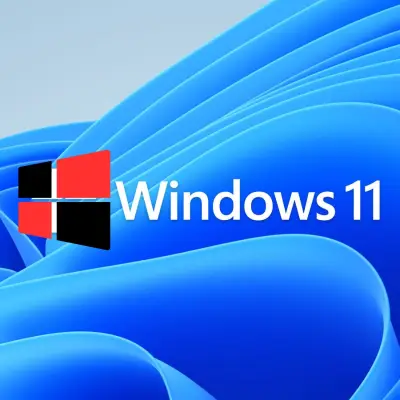
Is Windows 11 Better Than Windows 10 ?
One of the most noticeable changes in Windows 11 is the redesigned user interface. It features rounded corners, new icons, a centered taskbar, and a revamped Start menu.
The Start menu drops the live tiles of Windows 10. Instead, it shows pinned and recommended apps and documents, as well as a search bar and a power button. The Start menu can also be moved to the left corner of the screen, if the user prefers the traditional layout.macOS image processing
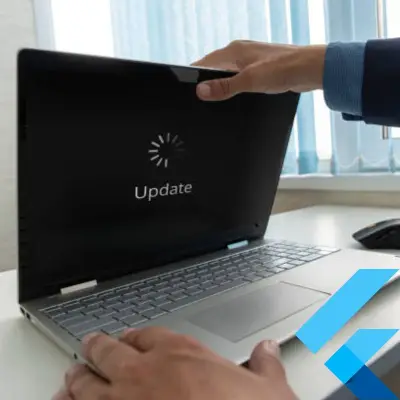
Another major change in Windows 11 is the introduction of Widgets. You can access personalized and dynamic content cards from the taskbar. Widgets can show information, such as weather, news, calendar, photos, traffic, sports, and more. They display content based on the user’s interests and preferences. Widgets are powered by Microsoft Edge and Bing, and can also be customized and resized by the user.
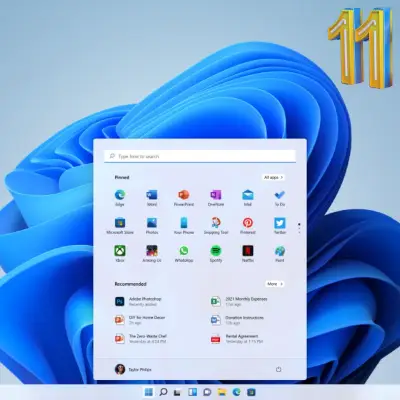
Windows 11 also improves multitasking and productivity. For example, with Snap Layouts, Snap Groups, and virtual desktops. Snap Layouts allow the user to quickly arrange many windows on the screen in different patterns. These patterns can be two, three, or four windows side by side. They can also be a main window with two smaller ones on the side. Snap Groups are collections of windows that belong to the same project or task. They can be easily restored from the taskbar. Virtual desktops enable the user to create separate workspaces for different purposes. These include work, gaming, and personal use. Users can switch between these workspaces with a swipe or a click.
Windows 11 also improves system compatibility and integration with various devices and platforms. Windows 11 supports Android apps. You can download them from the Amazon Appstore. Then, you can run them on the system using Intel Bridge technology. Windows 11 also supports Xbox Game Pass. This allows users to access hundreds of PC games with a subscription. Windows 11 also works seamlessly with Microsoft 365. It also works seamlessly with Teams, OneDrive, and other Microsoft services. It also works well with devices such as Surface, Xbox, and Android phones.
In conclusion, Windows 11 is a significant evolution of Windows 10. It brings a fresh and modern look, as well as new and improved features, to the operating system. Windows 11 aims to offer a smooth, secure, and versatile experience for its users. It’s designed for work, play, or anything in between. Windows 11 is available as a free upgrade for eligible Windows 10 devices. It is also available as a new installation for new devices.
What are the system requirements for Windows 11?
According to Microsoft, these are the minimum system requirements for installing Windows 11 on a PC.
Processor: 1 gigahertz (GHz) or faster with 2 or more cores on a compatible 64-bit processor or System on a Chip (SoC). RAM: 4 gigabyte (GB). Storage: 64 GB or larger storage device. System firmware: UEFI, Secure Boot capable. TPM: Trusted Platform Module (TPM) version 2.0. Graphics card: Compatible with DirectX 12 or later with WDDM 2.0 driver. This display is high definition (720p) and over 9 inches diagonally. It has 8 bits per color channel. Windows 11 Home edition requires an internet connection and Microsoft account. You need both to complete device setup the first time you use it. You can also use the PC Health Check app to assess if your device meets these requirements. If your device does not meet these requirements, you may not be able to install Windows 11 on your device. You might want to consider purchasing a new PC.
What is the difference between Windows 10 and Windows 11?
Windows 10 and Windows 11 are two versions of Microsoft’s operating system. Windows 11 is the latest and most advanced one. Some of the main differences between them are:
Windows 11 has a new and modern user interface. It has rounded corners and new icons. The taskbar centers and revamps the Start menu. Windows 11 supports Android apps. You can download the apps from the Amazon Appstore. They run on the system using Intel Bridge technology. Windows 11 has improved multitasking and productivity features. For example, it has Snap Layouts, Snap Groups, and virtual desktops.
These features allow the user to easily arrange and switch between many windows and workspaces. Windows 11 has enhanced gaming features. These include Auto HDR, Direct Storage, and Xbox Game Pass. They provide better graphics, faster loading, and access to hundreds of games.
Windows 11 has stricter system requirements than Windows 10. It needs a 64-bit processor, a TPM 2.0 chip, and UEFI firmware with Secure Boot capability. Windows 11 is available as a free upgrade for eligible Windows 10 devices. It is also available as a new installation for new devices.
What are the new features of Windows 11?
Windows 11 is the latest version of Microsoft’s operating system, released on October 5, 2021. It introduces many new features and improvements over Windows 10, such as:
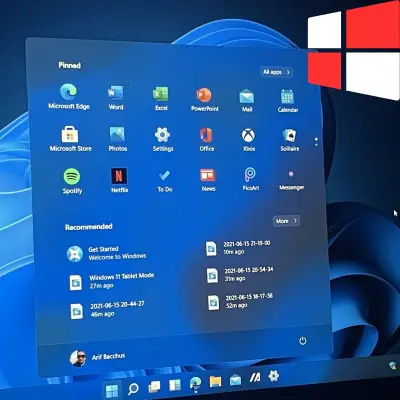
A new and modern user interface features rounded corners and new icons. It also has a centered taskbar and a revamped Start menu. You can download support for Android apps from the Amazon Appstore. They run on the system using the Intel Bridge technology.
The improved features include Snap Layouts, Snap Groups, and virtual desktops. They allow the user to easily arrange and switch between many windows and workspaces.
Improve gaming features like Auto HDR, Direct Storage, and Xbox Game Pass. They provide better graphics. They also enable faster loading. Xbox Game Pass also gives access to hundreds of games.
The system requirements for Windows 10 are stricter. For example, they need a 64-bit processor, a TPM 2.0 chip, and UEFI firmware with Secure Boot capability. Windows 11 is only available as a free upgrade for eligible Windows 10 devices. It’s also available as a new installation for new devices.
How do I upgrade from Windows 10 to Windows 11?
There are different ways to upgrade from Windows 10 to Windows 11. It depends on your device’s compatibility and the upgrade’s availability. The recommended way is to use Windows Update in Settings. It will notify you when the upgrade is ready for your device. You can also use the Installation Assistant. You can create Windows 11 installation media. You can buy a license to run Windows 11 on a custom-built PC. But, Microsoft does not recommend these methods. They may not guarantee a smooth and secure upgrade experience.
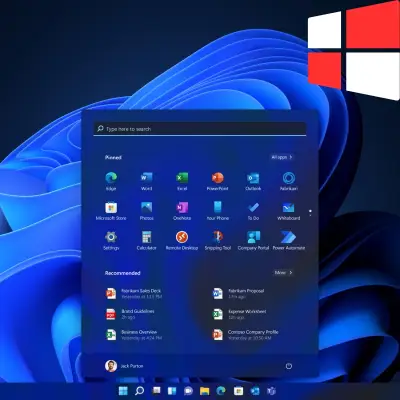
Before you upgrade, check the least system requirements for Windows 11. The computer includes a 64-bit processor, 4 GB RAM, and 64 GB storage. It also has UEFI firmware, TPM 2.0, a DirectX 12 compatible graphics card, and a high definition display. You can also use the PC Health Check app to assess if your device meets these requirements. If your device doesn’t meet these requirements, you may not be able to install Windows 11. You might want to consider purchasing a new PC.
How do I check if my PC can run Windows 11?
There are different ways to check if your PC can run Windows 11. The easiest way is to use the PC Health Check app from Microsoft. This app will scan your device and tell you if it meets the minimum system requirements for Windows 11. The device has a 64-bit processor, 4 GB RAM, and 64 GB storage. It also has UEFI firmware, TPM 2.0, a DirectX 12 compatible graphics card, and a high definition display. You can download the PC Health Check app from here and follow the steps below to use it:
Double-click the setup file and install PC Health Check on your Windows 10 device. Then, launch it. In the main interface, click the Check now button to do the Windows 11 compatibility test. If your device passes the compatibility test, you will see a message that says This PC can run Windows 11. If not, you will see a message that explains why your device is not compatible and what you can do to fix it.
Can I still use my old apps on Windows 11?
Most apps created for earlier Windows versions will work in Windows 11. But, some older ones might run poorly or not at all. You can try to run your old apps on Windows 11 using the built-in compatibility mode feature. This feature lets you choose settings from an earlier version of Windows for your apps.
Here are the steps to use compatibility mode on Windows 11.
Right-click on the app’s executable file or shortcut and select Properties. Go to the Compatibility tab and check the box for Run this program in compatibility mode for. Select the Windows version that your app was designed for or worked with from the drop-down menu. You can also try different versions until you find the one that works best for your app.
Click on Apply and OK to save the changes. Run the app and see if it works as expected. If you still have issues with your old apps, you can use the Compatibility troubleshooter too. It automatically finds and fixes compatibility problems. You can access it by clicking on Run compatibility troubleshooter. It’s located under the Compatibility tab in the app’s properties. Otherwise, you can search in the Windows search box for programs made for older versions of Windows. Then, follow the instructions.
